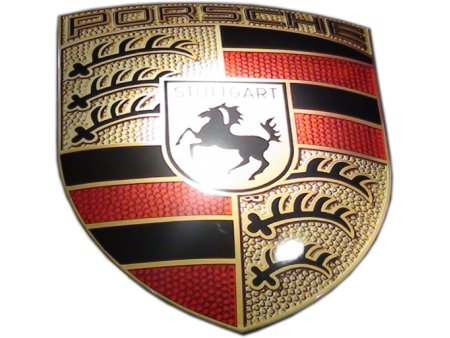


Before constructing the Beetle, Ferdinand Porsche had already gained an amount of experience and fame. Around the turning of the century he built highly expensive electric cars at Lohner`s. In Vienna he made a name for himself in connection with internal combustion engines for noble cars and airplanes. Being responsible for the most important Mercedes constructions (e.g., the compressor vehicles), he later succeeded famous designers like Wilhelm Maybach and Paul Daimler. Nevertheless, his sensational engineer's talent was paired with a certain stubborness or abrupt rage which better fitted to an independent enterpriser. He left Mercedes with the famous gesture of smashing his hat on the floor and later during hard times set up his own construction company. Often he could not pay his employees adequately but he managed to bind them by his obviously huge potential.
His archive did not only hold ideas of huge and fast cars, but already for some time he pursued a project of a mass product, produced in large numbers at a reasonable price and technically definetely sophisticated. In 1933 Adolf Hitler seized power. Already in Vienna he was one of Porsche`s admirers and, moreover, he was a fan of Mercedes vehicles. Both Porsche and Hitler were men of high determination, one in regard to realization of technical solutions, the other to goals that Germany was to regret bitterly.
Europe and especially Germany were suffering from the influence of the worldwide economic crisis. Porsche struggled for contracts and the survival of his company. In this situation he wrote to Hitler offering his services for the construction of the Auto - Union race car. Thanks to Porsche`s efforts the Nazis split their financial budget for racing sports between Auto – Union and Mercedes.
At a second meeting with Third Reich officials Porsche introduced his plans for a mass production compact car as mentioned above. The conditions for development and construction of the first Volkswagen he was faced with, were rather tough.The requirements were to build a car that would cost less than 1000 Reichsmark – which by that time was more than 50% below average price - and it should be able to carry four people at 100 km/h of highway speed. Porsche agreed to build a prototype within one year, terribly little time considering that there was no similar construction that he could make use of.
The car Union type C was a racing car of absolutely new style, rather a precursor of today's formula vehicles and this put Porsche`s former employer, Mercedes, under high pressure. The duels, for example for the world speed record became more and more grim. The young, extremely talented racing driver Bernd Rosemeyer became victim of this fight when he ventured an attempt at approx. 440 km/h with too strong crosswinds. Nevertheless, the fame of german racing cars crossed even the Atlantic.
Most probably it was clear already in the beginning that for the Volkswagen a new, gigantic factory had to be built. Dictatorships can handle such needs quite different than democratically organised states. So the money for the development of the Volkswagen and the factory construction was taken from confiscated accounts of the German working front and strike cashes of the trade unions. Planning and developement of both car and factory happened in record time simply because opponents were put under pressure and threatened with expropriation.
50,000 people watched the laying of the factory`s foundation stone and a multiple of it listened to the radio broadcast. By this time five Volkswagen cars – Beetle as it will be called later – had been built already and these were shown all around the country so people could see what they were dreaming of. „For five Reichsmark a week you can drive your own car“, so they were told and in 1939 already 300.000 customers payed that rent. So what? Porsche was a famous constructor, they had seen and probably touched that car already and the new factory was under construction. Why should anyone believe there would be war only one year later?
Indeed, the money of most people was lost. Only a small minority managed much later to receive a modest reduction (600 DM) for the purchase of a beetle, or 100 DM if not buying one. At the beginning of the war nearly no private car was produced. Instead, in the huge construction shell of the Volkswagen factory they built wooden transport boxes for the air force and small stoves for the eastern front. Not really war-decisive stuff! Even the Volkswagen - jeep was not built before 1942 when its advantages became obvious not only at the eastern front, and the amphibian car appeared in 1943.
Although politically probably not very engaged, Porsche made a career in Hitler`s empire who always had a crush on constructors. He became head of the tank development and construction commission. Most of the results were highly cost- effective, not very successful models. One of them weighed up to 150 tons which couldn`t even be transported by railroad. Later, Porsche got involved in the production of the V1-rocket. Due to his strong engagement in the technical sector he realized rather late that the majority of his employees were concentration camp prisoners and forced laborers working for just a piece of bread.
His protests against their treatment showed no effect and so, in spite of his genius, Ferdinand Porsche remained a disputed designer. After the end of the war he spent two years in french custody without any legal proceedings until his family managed to ransom him with great difficulties,
In the development of the first cars carrying his name Ferdinand Porsche did not play an important part, he was just commended to this. Obviously his son Ferry managed to separate from his father who did not do more than taking note of the events to come. Weakened after a stroke in autumn 1950, Ferdinand Porsche died in January 1951. 01/10